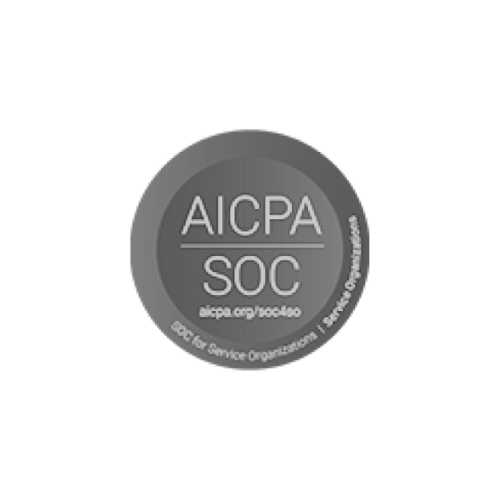The safety and security of the nation depend heavily on the men and women with government security clearance. They work on various sensitive, classified, and confidential projects for the government, making national security, safety, and economic wellbeing a priority. As a result, a rigorous background screening process is conducted to ensure only trustworthy individuals are granted clearance.
Understanding Government Security Clearance
Government security clearances are necessary for all employees, contractors, and consultants who require access to classified documents, facilities, or systems. Security clearance level varies based on the significance and sensitivity of the information to be accessed, and the potential impact of unauthorized disclosure.
In the US government, there are three levels of security clearance, namely Confidential, Secret, and Top Secret. Each clearance level has different levels of vetting and background screening.
Levels of Security Clearance
The Confidential clearance level involves a minimum background check that includes a review of criminal records and employment verification. Secret clearance requires a more in-depth background check that includes a review of criminal records, financial history, foreign contacts, and personal references.
The Top Secret clearance level, the highest level of clearance in the US government, requires a thorough and comprehensive background check, which covers all elements of the Secret clearance level, plus a Single Scope Background Investigation (SSBI).
Clearance levels are determined by the level of access required to classified information. Confidential clearance is granted to individuals who require access to information that could cause damage to national security if disclosed. Secret clearance is granted to individuals who require access to information that could cause serious damage to national security if disclosed.
Top Secret clearance is granted to individuals who require access to information that could cause exceptionally grave damage to national security if disclosed.
The Process of Obtaining Clearance
The government security clearance process is thorough, rigorous, and can take several months to complete. It involves various security checks, including background screening, interview, reference checks, and a host of other screening procedures. It’s important to note that clearance requirements may vary depending on the security needs of the agency or department sponsoring the clearance.
During the clearance process, a candidate’s personal life, including their financial history and foreign contacts, is thoroughly scrutinized. Investigators will also look into the candidate’s criminal history, education, and employment history. This process is designed to ensure that only trustworthy individuals are granted access to classified information.
Once a candidate has completed the clearance process, they are required to undergo periodic reinvestigations to maintain their clearance. These reinvestigations are conducted periodically, and the frequency of the reinvestigation depends on the level of clearance held by the individual. Individuals with Top Secret clearance are subject to the most frequent reinvestigations, typically every five years.
In conclusion, government security clearance is a vital component of national security. It ensures that only trustworthy individuals have access to classified information and facilities. The clearance process is rigorous and thorough, designed to weed out individuals who may pose a threat to national security. If you’re interested in pursuing a career in government or working as a contractor or consultant for the government, understanding the clearance process is essential.
The Role of Background Screening
Background screening plays a crucial role in the security clearance process. It ensures that individuals who are granted clearance do not pose a risk to national security, classified information, or sensitive data.
The background screening process, therefore, seeks to verify the identity, employment history, and education credentials of the applicant, and assess their financial situation, criminal history, personal relationships, and integrity.
Let’s take a closer look at the different aspects of background screening:
Verifying Identity and Employment History
During background screening, an individual’s identity and employment history are verified to ensure that they have the proper qualifications and experience that match the clearance level sought. This includes a review of academic credentials, employment history, and professional licenses and certificates.
For example, if an individual is seeking a security clearance for a job that requires a certain level of education, the background screening process will verify that the individual has indeed obtained the required degree or certification. Similarly, if an individual claims to have worked for a particular company or organization, the background screening process will verify that claim by contacting the company or organization in question.
Verifying an individual’s identity and employment history is important because it helps to ensure that the individual is who they claim to be and that they have the necessary qualifications for the job.
Assessing Criminal Records and Financial Stability
Applicants must disclose their criminal history during the security clearance process. The background screening process checks for any previous criminal convictions, misdemeanors, or felonies that could potentially make them ineligible for clearance. Credit checks may also be conducted to assess an applicant’s financial stability.
Assessing an individual’s criminal history and financial stability is important because it helps to ensure that the individual does not have a history of criminal behavior or financial instability that could make them vulnerable to bribery, blackmail, or other forms of coercion.
For example, if an individual has a history of financial problems, they may be more susceptible to accepting bribes or engaging in other forms of corruption. Similarly, if an individual has a history of criminal behavior, they may be more likely to engage in espionage or other activities that could compromise national security.
Evaluating Personal Connections and Foreign Contacts
Foreign contacts and personal relationships are another area of concern that the government looks into when screening for clearance. Through a detailed questionnaire, applicants must disclose all foreign connections and any personal relationships that could compromise their security clearance.
Foreign contacts and personal relationships are important to evaluate because they can provide insight into an individual’s loyalties and potential vulnerabilities. For example, if an individual has close personal relationships with individuals from a foreign country, they may be more susceptible to influence or pressure from that country.
Additionally, if an individual has financial or business ties to a foreign country, they may be more likely to engage in activities that could compromise national security.
In conclusion, background screening is a critical component of the security clearance process. By verifying an individual’s identity, employment history, criminal history, financial stability, and personal connections, the government can ensure that individuals who are granted clearance are trustworthy and do not pose a risk to national security or sensitive information.
The Benefits of Thorough Background Screening
The extent and depth of background screening ensure that employees with clearance have the highest levels of integrity, honesty, and reliability. These employees, by virtue of their clearance, handle some of the nation’s most sensitive information and work on some of the most sensitive projects. As such, the thorough background screening process plays an integral role in:
Ensuring National Security
The background screening process protects national security by ensuring that only individuals who pose no risk to national security obtain clearance. The clearance process also helps identify potential insider threats that would have impacted operations and allows actions to be taken to mitigate risks.
Furthermore, national security is not just about protecting the country from external threats, but also from internal ones. A thorough background screening process ensures that individuals with access to sensitive information are not susceptible to coercion, blackmail, or other forms of manipulation that could compromise national security.
Protecting Sensitive Information
Security clearance employees have access to sensitive information, which makes them more vulnerable to cyber-attacks and espionage. A robust background screening process helps to identify vulnerabilities and strengthen security protocols to protect sensitive information from malicious actors.
Moreover, a thorough background screening process can help identify individuals who may be susceptible to social engineering attacks. Social engineering attacks are a method of manipulating individuals to divulge sensitive information or perform actions that could compromise security. By identifying individuals who are susceptible to these attacks, organizations can provide targeted training to prevent such attacks from succeeding.
Maintaining Trust in Government Personnel
The rigorous and thorough background screening process instills confidence among the public and other government agencies that individuals granted clearance have undergone significant vetting and screening, making them trustworthy individuals who can handle sensitive information.
Moreover, a thorough background screening process can help identify individuals with a history of unethical behavior. By weeding out individuals with a history of unethical behavior, organizations can maintain the public’s trust in government personnel and ensure that sensitive information is handled by individuals with the highest levels of integrity.
In conclusion, the benefits of a thorough background screening process are numerous. From ensuring national security to protecting sensitive information and maintaining the public’s trust in government personnel, a thorough background screening process plays a vital role in safeguarding the nation’s interests.
Common Challenges in the Background Screening Process
The background screening process is an essential part of ensuring the safety and security of individuals and organizations. However, it can be a tedious and challenging process for both applicants and sponsors. The following challenges are common:
Incomplete or Inaccurate Information
One of the most significant challenges in the background screening process is incomplete or inaccurate information provided by the applicant. This can be due to various reasons, such as forgetfulness, lack of understanding of the questions, or intentional omission of information.
Incomplete or inaccurate information can cause delays in the clearance process, as the screening agency may need to request additional information or clarification from the applicant.
It is crucial for applicants to take the time to thoroughly review and provide accurate information on their application. This will help expedite the screening process and avoid any unnecessary delays.
Lengthy Processing Times
The background screening process can be time-consuming, as it requires comprehensive vetting and verification procedures. The process can take anywhere from a few months to over a year, depending on the level of clearance, backlog of applications, and the quality of information provided by the applicant.
During this time, applicants may experience anxiety and uncertainty about the status of their clearance. Sponsors may also face challenges in managing their workforce, as they may need to delay hiring or deployment until the clearance process is complete.
It is essential for sponsors to communicate clearly with applicants about the expected processing times and keep them updated throughout the process.
Balancing Privacy and Security Concerns
The clearance process sometimes requires detailed information on personal and financial aspects of an applicant’s life to allow for comprehensive screening. This can raise privacy concerns for applicants, who may be hesitant to provide this information.
Therefore, balancing privacy and security concerns is essential to gain the confidence of applicants in the clearance process. Screening agencies should ensure that they are collecting only the information necessary for the clearance process and that they are following all applicable privacy laws and regulations.
Applicants should also be provided with clear information on how their personal information will be used and protected during the screening process.
In conclusion, the background screening process can be challenging, but it is a necessary step to ensure the safety and security of individuals and organizations. By addressing these common challenges, sponsors and screening agencies can work together to streamline the clearance process and provide a positive experience for applicants.
Best Practices for Background Screening
Background screening is a critical part of the hiring process, as it helps employers make informed decisions about potential employees. However, the screening process can be complex and time-consuming, and mistakes can be costly. Employers and sponsors can improve the background screening process by implementing best practices, including:
Implementing Standardized Procedures
Using standardized screening procedures can help streamline the screening process and ensure consistency, accuracy, and fairness in decision-making. Employers may define standard criteria for screening background information and have a dedicated team or designated HR personnel to manage the process.
Standardized procedures can also help ensure compliance with legal and regulatory requirements. For example, employers must comply with the Fair Credit Reporting Act (FCRA) when conducting background checks, which includes obtaining written consent from the applicant and providing them with a copy of the report if adverse action is taken.
Utilizing Reliable Screening Tools and Services
The use of reliable screening tools and services can enable faster and more accurate screening, minimizing the risk of errors or omissions. Employers should consider using reputable vendors or online platforms to conduct background checks that comply with regulations, industry standards, and best practices.
Some screening tools and services may include criminal record searches, employment and education verifications, credit checks, and drug testing. Employers should carefully consider which screening tools and services are appropriate for their industry and the position being filled.
Continuously Updating and Monitoring Clearance Status
Background screening is not a one-time event, but an ongoing process. Periodic and continuous monitoring of clearance status allows for quick identification of any changes or incidents that could impact an employee’s suitability for clearance. Employers should maintain records of clearance statuses and review them regularly.
Continuous monitoring can also help employers identify potential risks or threats to their organization. For example, if an employee’s clearance status changes due to a criminal conviction or other incident, the employer may need to take action to mitigate the risk.
In conclusion, implementing best practices for background screening can help employers make informed decisions about potential employees while minimizing the risk of errors or omissions. By using standardized procedures, reliable screening tools and services, and continuously monitoring clearance status, employers can ensure a fair and effective screening process.
The Future of Government Security Clearance and Background Screening
The role of technology in background screening and security clearance is rapidly evolving. New technologies such as Artificial Intelligence and machine learning can automate and streamline the screening process. Likewise, evolving security threats and requirements continue to drive the need for innovative and more comprehensive screening procedures.
Technological Advancements and Automation
Technology provides an opportunity for employers to leverage automation and identify risks and potential threats more efficiently. Employers may utilize AI-driven algorithms to track and flag any changes in a candidate’s background, such as criminal records or financial history. With the help of automation, employers can reduce the time and effort required for screening, and they can focus on other essential aspects of their business.
Moreover, automation can help reduce the risk of human error, which can be costly and time-consuming. Automated systems can flag discrepancies and inconsistencies, which can help employers identify potential issues before they become significant problems. This can help organizations maintain a high level of security and reduce the risk of security breaches.
Evolving Security Threats and Requirements
Security threats are continually evolving, which necessitates a need for more comprehensive and effective security clearance procedures. Employers may need to adapt their screening processes to reflect changes in the security landscape and keep up with emerging trends in screening technology.
For instance, with the rise of cyber threats, employers may need to focus more on screening candidates’ digital footprints, such as their social media profiles and online activities. Employers may also need to consider new screening criteria, such as a candidate’s knowledge of cybersecurity and their ability to identify and respond to security threats.
The Role of Public-Private Partnerships
Public-private partnerships can play an essential role in supporting the screening process by leveraging the expertise of private companies and government agencies. Such partnerships encourage innovation and efficiencies in the screening process and enable greater collaboration and sharing of information between public and private organizations.
For example, private companies may have access to advanced screening technologies that government agencies may not have. By partnering with private companies, government agencies can leverage these technologies and improve their screening processes. Moreover, public-private partnerships can help improve the quality of screening data and reduce the risk of errors and inaccuracies.
In conclusion, the future of government security clearance and background screening is closely tied to the continued evolution of technology and the need to adapt to emerging security threats. With the help of automation and public-private partnerships, employers can improve the efficiency and effectiveness of their screening processes and maintain a high level of security in their organizations.
Conclusion
The importance of background screening for government security clearance cannot be overstated. The screening process ensures that only trustworthy and reliable individuals gain clearance, enhancing national security and protecting sensitive information. Despite the challenges that accompany the clearance process, employers must implement best practices to streamline processes and address security concerns while balancing the privacy rights of applicants. Moving forward, the use of technology continues to reshape background screening and security clearance processes and become a crucial tool for employers and government agencies alike.
















